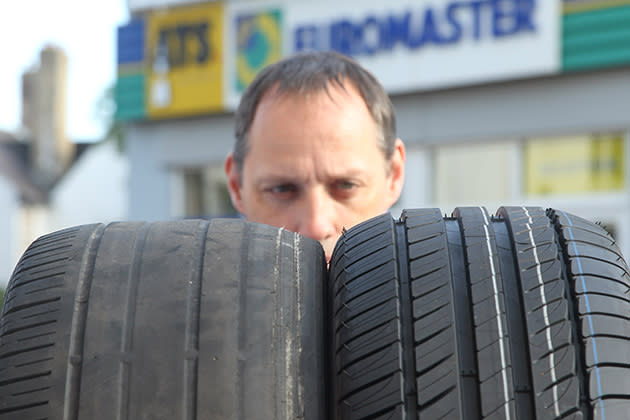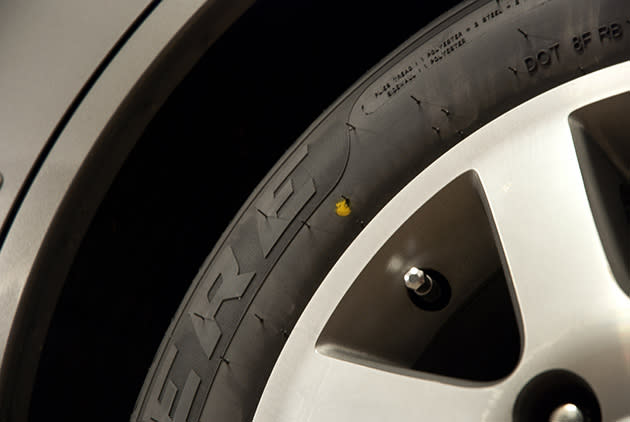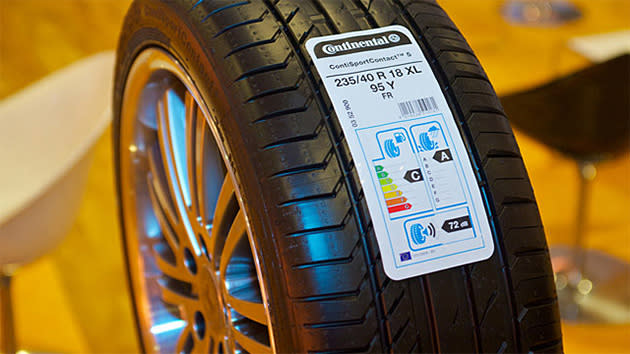Stripes and dots: Not a tyre’s fashion statement
When you buy a new tyre, chances are, it will come with labels, several colour markings and strips. Have you ever wondered what those markings and strips are for?
Let's start with the sidewalls of the tyre. Chances are, you would be familiar with the tyre sizing, but not what the rest of the tyre markings mean. Through experience, the most misunderstood and ignored tyre markings are the red and yellow dot. Some tyre installers do not know what they stand for either! So, the next time you pick up fresh new rubber, here is some useful information that would save you from balancing troubles.
There is no such thing as a perfect world. Even if they appear to be round, a tyre will have little imperfections that are invisible to the naked eye. The same goes for rims. Why not manufacture to exact dimensions then? It would be extremely difficult and expensive – think about all the rejects just to get a perfectly round wheel!
Everyone knows that an improperly balanced wheel will start to vibrate at high speeds – something inevitable when it starts to spin at over 50,000rpm. While tyre balancing machines help to cancel this effect out, by the use of wheel weights, careful tire mounting using the yellow and red dots will help to minimize balancing problems. Remember, these dots are only an assistance to tyre balancing, it should not be used as a replacement for proper wheel balancing.
The red and yellow dots are the starting point for the tyre installer to mount the tyres.
A tyre, spun at 50,000rpm will start to deflect towards with the slightest imbalance in the construction. Tyre manufacturers, with precision measuring machines usually use a red dot to signify the part of the tyre that makes the maximum deflection when spun at speed. The same goes for rims – the factory will mark the rims with a small symbol to indicate the lowest point, the opposite of the maximum deflection of the rim.
If your new tyre comes with the red dot, it is highly advised to line it up with the dimple on the rim for the best balance. However, not all rims will indicate the point of the “lightest part” which renders the red dot to dimple matching almost impossible, but don't fret, there is also another method: Using the yellow dot.
The yellow dot on the tyres mark its lightest balance point, a.k.a the “lightest” part of the tyre. How do you tell which would be the “heaviest” part of the rim? Generally, the “heaviest” part of the rim is where one has to install an additional air valve, which adds weight. This has been proven true regardless of whether the wheel is made of steel or aluminium. Matching the yellow dot to the valve stem is not as precise as matching the red dot to the dimple on the rim, but it will suffice for most purposes.
Only new tyres from the factory will come with the red or yellow dot, which is why second hand tyres tend to be a little more tricky, or require more wheel weights to get perfectly balanced.
What about the various colour stripes that you might find on the tyre thread? While some say it's the “run out” line, most of the tyre folks state that the colour stripes are an identification code that is sprayed on to ensure that the factory workers will know which components to add as the rubber sheets are passed though the pressing machines, before being vulcanized to become a tyre.
It is interesting to note that these tyre stripes are often factory-specific and they can be different even if you have identical tyres - at least now you'll know that they are manufactured in different factories.
In recent years, the new EU Tyre Label has been proliferating the local tyre market. There are three parts of the label: fuel economy, wet grip and noise levels. It is expressed in grades, ranging from A to G. A is the highest performance tyre in its category; G is currently the least performing.
As decibel values may be confusing, the noise class is also shown. 1 black wave for quiet, 2 black waves for moderate and 3 black waves for noisy.
One should note that the 3 criteria, although important, are not the only performance parameters for a tyre- thus it should be taken as a rough guide only.





